Old Latin
Videos
Page
Old Latin, also known as Early Latin or Archaic Latin, was the Latin language in the period roughly before 75 BC, i.e. before the age of Classical Latin. It descends from a common Proto-Italic language; Latino-Faliscan is likely a separate branch from Osco-Umbrian with possible further relation to other Italic languages and to Celtic; e.g. the Italo-Celtic hypothesis.
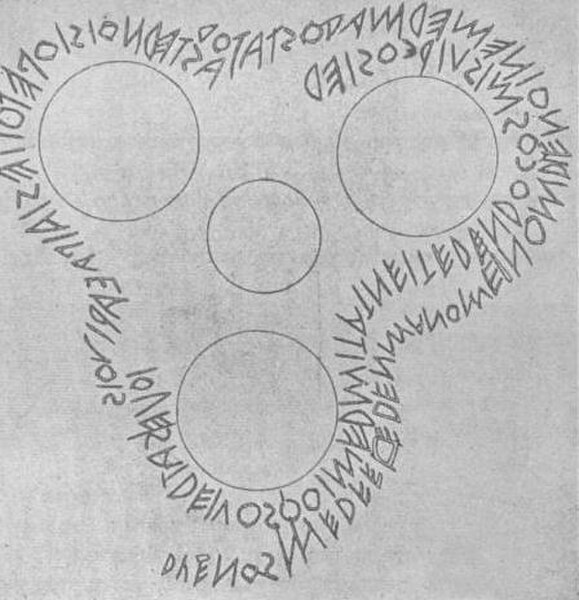
The Duenos inscription, one of the earliest Old Latin texts

The Praeneste Fibula, the earliest known specimen of the Latin language and dated to the first half of the seventh century BC.
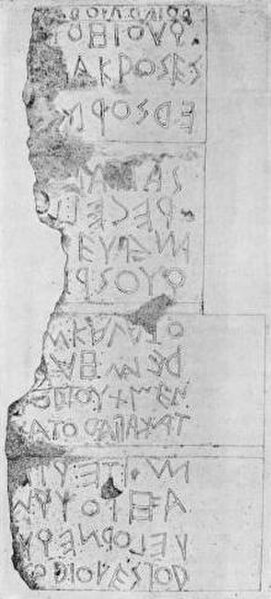
The Forum inscription (Lapis Niger, "black stone"), one of the oldest known Latin inscriptions, from the 6th century BC; it is written boustrophedon, albeit irregularly; from a rubbing by Domenico Comparetti.

The Duenos Inscription on a trio of three globular kernos vases
Latin
Videos
Page
Latin is a classical language belonging to the Italic branch of the Indo-European languages. Considered a dead language, Latin was originally spoken in Latium, the lower Tiber area around Rome. Through the expansion of the Roman Republic it became the dominant language in the Italian Peninsula and subsequently throughout the Roman Empire. Even after the fall of Western Rome, Latin remained the common language of international communication, science, scholarship and academia in Europe until well into the early 19th century, when regional vernaculars supplanted it in common academic and political usage—including its own descendants, the Romance languages. For most of the time it was used, it would be considered a dead language in the modern linguistic definition; that is, it lacked native speakers, despite being used extensively and actively.
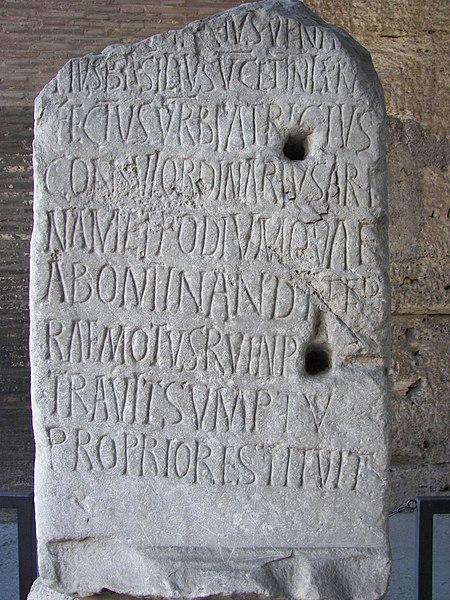
Latin inscription on a stone inside the Colosseum in Rome, Italy
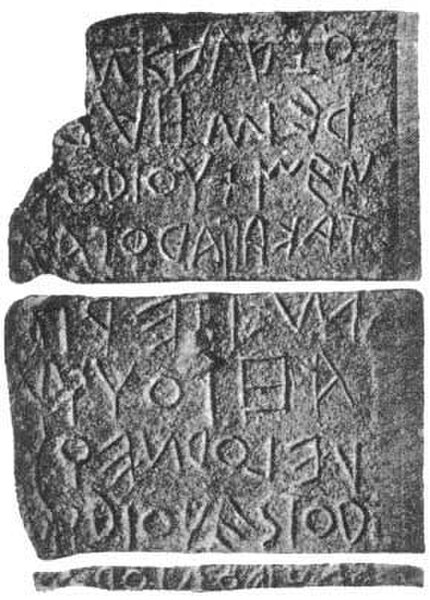
The Lapis Niger, probably the oldest extant Latin inscription, from Rome, c. 600 BC during the semi-legendary Roman Kingdom

The Latin Malmesbury Bible from 1407
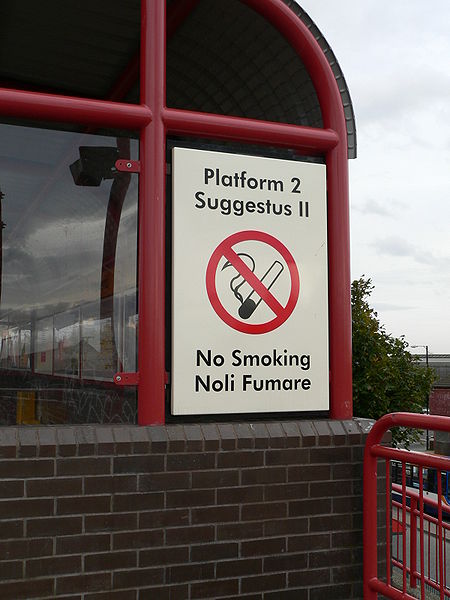
The signs at Wallsend Metro station are in English and Latin, as a tribute to Wallsend's role as one of the outposts of the Roman Empire, as the eastern end of Hadrian's Wall (hence the name) at Segedunum.